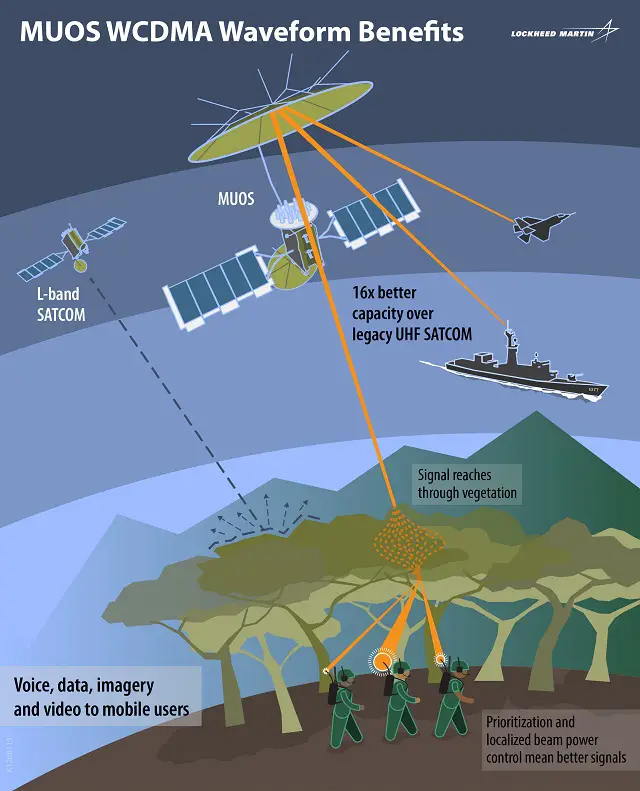|
US Navy Fifth and Final MUOS Communication Satellite Launched Successfully |
 An
Atlas V launch vehicle carrying the U.S. Navy's fifth Mobile User Objective
System (MUOS) communications satellite lifts off from Space Complex 41,
Cape Canaveral Air Force Station, Fla. MUOS is the next-generation narrow
band tactical satellite communications system designed to significantly
improve beyond-line-of-sight communications for U.S. forces on the move.
(U.S. Navy photo courtesy of United Launch Alliance/Released) An
Atlas V launch vehicle carrying the U.S. Navy's fifth Mobile User Objective
System (MUOS) communications satellite lifts off from Space Complex 41,
Cape Canaveral Air Force Station, Fla. MUOS is the next-generation narrow
band tactical satellite communications system designed to significantly
improve beyond-line-of-sight communications for U.S. forces on the move.
(U.S. Navy photo courtesy of United Launch Alliance/Released) |
|||
"The
MUOS Wideband Code Division Multiple Access (WCDMA) system provides significantly
increased capacity and coverage, superior voice quality and Internet-like
capabilities, enabling warfighters the flexibility to better communicate
what they need to, when they need to," said Capt. Joe Kan, program
manager for the Navy Communications Satellite Program Office (PMW 146). The MUOS-5 satellite is now in transit toward its geosynchronous orbit location, where it will then deploy its solar arrays and antennas. "MUOS-5 will be transitioning over the next nine days to reach its test slot 22,000 miles above the earth in a geosynchronous orbit," said Cmdr. Jason Pratt, principal assistant program manager of MUOS. "Once it has reached its location and deployed its arrays and antennas, on-orbit testing of the satellite will begin." MUOS is a system consisting of five satellites, four ground stations across the globe, a network management system and an integrated WCDMA waveform. The first four MUOS satellites are already operational via their legacy payloads, providing UHF satellite communications (SATCOM) for the DoD and mitigating potential gaps in UHF communications capabilities. The system's WCDMA capability, currently in its test and evaluation stage, employs advanced third-generation cellular technology adapted for military SATCOM. "Looking forward, we are continuing to focus efforts on transitioning to the WCDMA capability of MUOS," said Jarratt Mowery, director of end-to-end system integration. "The system first demonstrated WCDMA voice and data calls via the Army's Manpack radios in 2013, and we've since conducted testing and training with each of the various service branches. We're excited to keep working with end-users to ultimately provide warfighters the ability to talk, text and share data around the world using the MUOS WCDMA system." The MUOS constellation and associated network will extend narrowband communications availability well past 2025. |
|||









